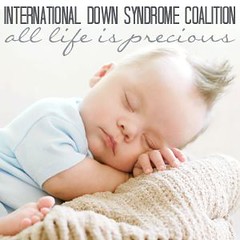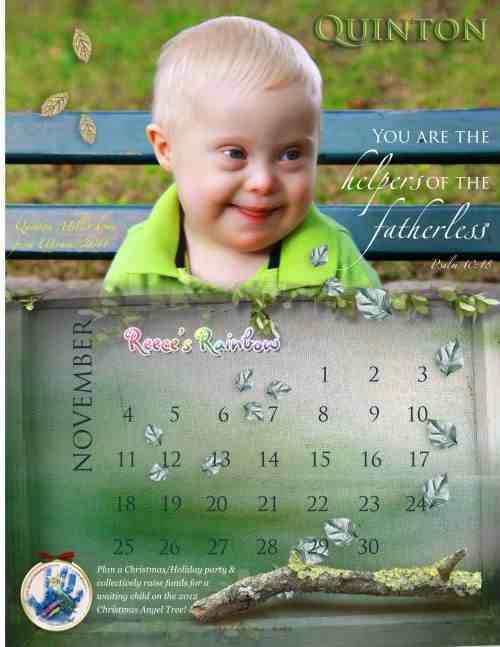I told you I was gonna cheat so here's the first :). I "borrowed" this from my friend Meredith's blog. (If you read this Meredith, Thank You!!) If you don't already, go visit her family.
Meredith said:
The three types of Ds are "non-disjunction Trisomy 21" (ie, regular plain old Ds LOL), Mosaic Ds, and Translocation Ds. Here's what those mean:
Non-disjunction, or regular T21 accounts for a majority of cases of Ds. I think the number is around 95%. A typical person has 46 chromosomes, which are found in 23 pairs. With T21 there are three (trisomy) of the 21st chromosome. In regular plain old T21 the person has three 21's in every cell of their body. There is no "mild case" or "severe case" of T21, because it is in every cell. It's actually an over-abundance of information that is sent to the body, not missing info. T21 is not a hereditary disorder- it's not handed down in families. It is an anomoly that occurrs during conception, or even is carried within the egg or sperm. Something neat I learned recently is that people with T21 tend not to get cancers other than Leukemia. Researchers are studying the 21st chromosome to see if they can find the cure for cancer!
Mosaic Down Syndrome is also a triplicate of the 21st chromosome, but it is not in every cell of the body. This happens during cell division where anytime in the beginning formation of the body the cells divides and some get an extra 21st chromosome. From that point out every cell division from the affected cell has T21. Mosaic Ds may not be diagnosed in people who have very small portions of their body affected. If it is diagnosed, the range of ability, intelligence, and health issues has been found to be just as varying as that of a person with full T21. Many people with T21 are very high functioning individuals who are integrated into the school system and society, others will require lifetime care. Some have very few health issues, others have everything in the book. For mosaic Ds it is believed that the areas a person has the T21 can determine their ability level and certain physical characteristics as well. MDS accounts for about 2-3% of cases of Ds.
Translocation Down syndrome is a little different from the first two, but again, it presents itself the same way as T21 and MDS. Translocation is only found I believe in about 1-3% of those diagnosed with Ds. Translocation CAN be an inherited trait (one parent is a carrier and the child gets it from the parent) or it can occur spontaneously. Translocation means that a third 21st chromosome (or a piece of the 21st) is attached to another chromosome. The most common translocation is called 14:21 because the 21st chromosome is attached to the 14th. Another type of translocation is 21:21 where the third 21st chromosome is actually attached to another 21st chromosome.
And just for fun... there is technically a combined Ds which is called Mosaic Translocation, and that's where only a portion of the cells of the body have the translocated 21st chromosome :) How's that for tricky??
She explained that much better than I could.
Subscribe to:
Post Comments (Atom)







2 comments:
cheater, cheater pumpkin eater!
Yep! :)
Post a Comment